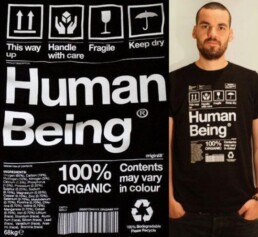Research Assumptions: Collaboration with The Centre for Education and Youth
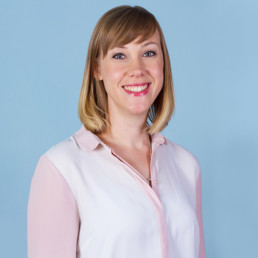
Written by Alix Robertson
Associate at The Centre for Education and Youth
A decade ago, a Canadian professor of human evolutionary biology named Joseph Heinrich published a paper with the curious title: ‘The weirdest people in the world?’.
The study explored how behavioural science was dominated by the perspectives of researchers who drew on samples from Western, Educated, Industrialised, Rich, and Democratic (WEIRD) societies. It has often been implicitly assumed that the results produced from working with these groups are as representative of the human species as any other population.
But are researchers justified in making this assumption? Heinrich and his colleagues, psychologists Steven Heine and Ara Norenzayan, pursued this question by carrying out an empirical review of studies involving comparative experimentation on important psychological or behavioural variables. While not all research is created equal, the study was published in the international journal ‘Behavioural and Brain Sciences’, as well as in the renowned British scientific journal ‘Nature’, and Henrich went on to develop the idea into a book that was released this year.
The researchers reported that findings based on ‘WEIRD’ subjects are actually particularly unusual, compared with the rest of the human species, across a range of areas including fairness, cooperation, reasoning styles and self-concepts. The study suggested that members of WEIRD societies, including young children, are among the least representative populations when it comes to generalising about humans. Heinrich concluded that “we need to be less cavalier in addressing questions of human nature on the basis of data drawn from this particularly thin, and rather unusual, slice of humanity”.
Given these findings, the team at CfEY are keen to use our expertise in research to support Diverse Educator’s goal of improving diversity, equity, and inclusion in education. To do this we will be acting as ‘ambassadors’ helping DiverseEd to establish its own research strand, made up of studies carried out by or focusing on groups within DiverseEd’s nine categories of protected characteristics – and beyond.
To kick start this work we have contributed some of our existing research to seed the collection and we look forward to supporting DiverseEd in growing this bank in future.
- Encountering Faiths and Beliefs: The role of Intercultural Education in schools and communities – a report with Three Faiths Forum (now The Faith & Belief Forum) outlining the key principles of Intercultural Education and offering insights into how these principles can be adapted to suit different settings’ needs.
- Special educational needs and their links to poverty - a report for the Joseph Rowntree Foundation showing close links between children having SEND and growing up in poverty; as well as the additional barriers these children face in accessing the support they need.
- Ethnicity, Gender and Social Mobility – a report for the Social Mobility Commissionin collaboration with Education Datalab, which explores how ethnicity, gender and poverty interact to support or constrain young people’s social mobility.
- Progression to University by Gypsy, Roma and Traveller Pupils - a report in partnership with Kings College London’s Widening Participation department, which reveals the barriers ‘at every level’ that combine to make Gypsy, Roma and Traveller pupils one of the most under-represented groups in UK universities.
- A Place to Call Home: Understanding Youth Homelessness – research undertaken in partnership with the Sage Foundation, looking at how youth homelessness and education interact, and different ways in which the education system can support young people at risk of becoming – or who are – homeless.
- Schools and Youth Mental Health: A briefing on current challenges and ways forward – a report with Minds Ahead examining the scale and severity of the UK’s Youth Mental health crisis.
- ‘Boys on Track’: Improving support for white FSM-eligible and black Caribbean boys in London - a report with the Greater London Authority looking at how support for white free school meal-eligible and black Caribbean boys across London can be improved.
- Special or Unique - a report from Disability Rights UK and CfEY that explores young people’s attitudes towards disability and young disabled people’s experiences of school.
- Representation, engagement and participation: Latinx students in higher education - a report with King’s College London, examining the representation, engagement and participation of Latinx students in higher education.
We hope that these examples of our work will inspire others to join in with this exciting initiative. At CfEY we apply a critical lens to everything we do, and while anyone who is interested will be free to submit their research to the collection, we encourage the sharing of robust findings. By contributing quality work on the important themes that DiverseEd spotlights, you will be helping to build up a growing bank of studies that will encourage readers to think carefully about diversity and equality, and how they can drive improvements in representation.
Watch out for two events Diverse Educators (with support from the CfEY) will be running early next year to introduce the DiverseEd research strand.
Don't Tuck in Your Labels
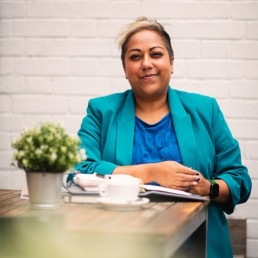
Written by Bennie Kara
Co-Founder of Diverse Educators
Written January 7, 2018.
I am the woman that always has a clothes label sticking out somewhere. In any given day, some kindly person will reach behind me and tuck it in. And I, without fail, will apologise for that label and the fact that someone had to decide what to do with me.
You see, clothes labels are really useful things. They tell you what to do with the item. How to take care of it – how to fix the item if it is damaged in some way. It stays there as a reminder that the item needs to be nurtured. Lots of us become irritated by them – how many times have we cut the label out because we can’t forget it is there – perhaps it’s rubbing against our skin, making us feel uncomfortable. I do it all the time with the vain hope that people will not have to fix me up and make me presentable.
I have made many jokes over the years at various conference about winning the competition on how many labels I have. We categorise people in so many different ways and I have seen it as a laughing matter. So when I was thinking about my labels, I decided to create a pie chart of the make up of me. Mostly just in case my Maths teacher is watching – my Maths GCSE started with 30 mins of me panicking because I had forgotten how to draw a pie chart.
So if you want to see what my clothes label says – this is me.
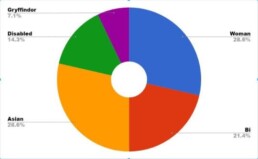
It took a long time to decide how much of me I could allocate to the different labels. I am a woman. Quite considerably so, according the number here. I am also equally Asian. It gets harder when I have to decide just how much of me is on the LBGT spectrum. I define as bisexual and have been in a relationship with a woman for a long time. All of these categories I have become comfortable with – while I know they present me with challenges, I have spent my life getting to know them.
I have come to know myself as a Gryffindor too. This is not in jest. I will not have anyone disagree. I’ve taken the test.
It is my last label that is more recent and perhaps the one I struggle with the most. I learned not long ago that I have hearing loss in both ears and it is more pronounced in my left ear. I will be wearing a hearing aid soon to help me function in loud spaces, to help me understand what people are saying when I can’t see their faces.
I mean, I know I’m a woman and can’t lift heavy things or be in charge of a boardroom. I know that I am Asian and therefore should probably be teaching Science and not English. I know that I am bisexual and this means I am greedy/just not willing to admit I am gay.
But I was not prepared to be disabled, albeit in a small way. In some ways I have to confront here my own misgivings about having a hearing impairment in a profession that is built on listening to children in order to teach them. I sat in a car park and cried. Because this female, Asian, bi person didn’t want another label – especially one that could literally mean people think I cannot do my job. How many glass ceilings for me?
It has taken time to adjust to it. It chafed. I could feel it rubbing. But I have left it there because it gives people another way to know me.
Some people will say: if we take away all labels, we can just be people. I absolutely agree. I want to be able to teach without any of those. At the risk of sounding like a below the line Daily Mail commentator, stop going on about your labels – it creates the victim complex. It’s not important to the way you teach, so just shut up and get on with it. Identity politics creates resentment. I resent you and your labels.
I don’t think any of us walk around with our labels on our sleeves. If teaching is a profession in which your authentic self is required for children and adults alike to connect and know you, if it a profession in which people are the centre then I do not want to lie, either overtly or by omission.
The average 18-44 year old lies twice a day. I am sure that you are sitting there thinking – well that’s low. I can smash that statistic by 9am in the morning on any given school day. But the lies I tell because I have to are now starting to grate.
There are things I can’t say, choose not to say, places I won’t ever visit with my partner – and it is exhausting making all of those decisions about who I can be when I am simultaneously juggling the demands of the curriculum, behaviour, marking, meetings, paperwork. Wouldn’t it just be easier for me and more real for the students if I didn’t have to think about my pronouns so carefully? Or worry about who is going to see me with my partner in the local area?
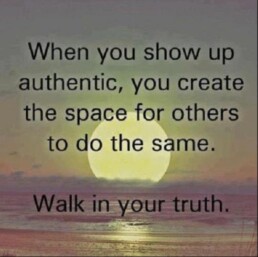
I spoke recently about the curriculum and how having diverse voices delivering content doesn’t take away from what we teach our students – when we teach the Ramayana or about Malian women’s contributions to local industry, we are not saying do not teach about Wordsworth or Dickens. Perhaps as a female, Asian, bisexual, disabled Gryffindor, I can enrich rather than detract. Hiring me, allowing me to be free within a role, means a better education. Not because I am better. But because I can bring my knowledge and still teach yours really quite well. There is enough oxygen for all of our stories, told with pride. Authenticity in teachers allows students to understand humanity in all of its guises. We actively prevent learning when we lie, when we omit.
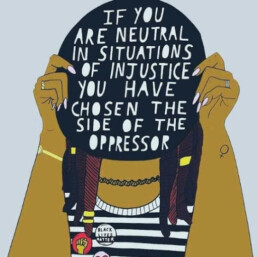
I have seen this quotation many times and it occurs to me that I no longer see it as being about other people. I see it as being about myself and about all of us that walk in different shoes. My silence about about me is collusion. I am colluding with the oppressor. It is unjust that I should be quiet, tuck in my labels to make everyone else feel comfortable, staff, students, parents alike. In remaining silent and not celebrating or sharing all of me as I am, I am complicit.
How can any of these things happen when we are silent?
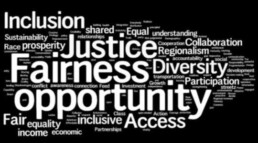
I am not asking anyone to stand up and shout from the rooftops about their sexuality, disability, gender or heritage. But I am asking you to stand, metaphorically speaking. And speak about your truths without fear. And perhaps, when you feel brave enough because you have a room full of people willing to support you – to act, in the way that makes you feel that you are authentic.
So, if you see me again and my labels are sticking out. Maybe don’t tuck them in.
Closing keynote: Diverse Educators Conference, 6th January 2018
